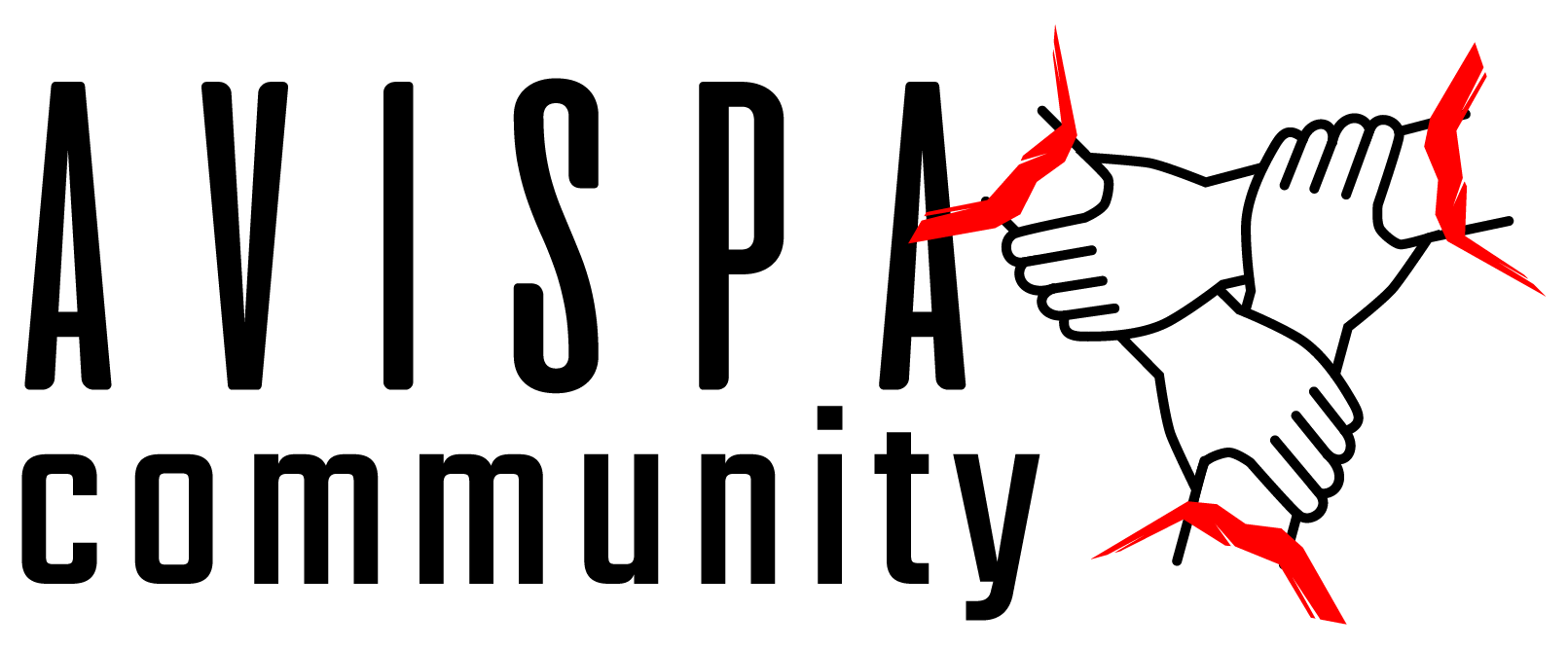Cover image: Residents of Unión Hidalgo peacefully protest against the cutting down of trees on communal lands for the renovation of Line K of the Interoceanic Corridor of the Isthmus of Tehuantepec.
In the Zapotec community of Unión Hidalgo in the municipality of Juchitán in the Isthmus of Tehuantepec, residents have denounced the negative environmental impacts caused by the renovation of Line K. Line K is one of three train lines of the Interoceanic Corridor which will connect to other megaprojects like the Maya Train in the Yucatan Peninsula, and the refinery of Dos Bocas in Tabasco.
The train lines were originally built at the beginning of the 20th century becoming very important in the transportation of commodities. Use of the train was interrupted in 2005 because of damage wrought by Hurricane Stan. Currently, the train lines are being renovated by the organizational body of the Interoceanic Corridor of the Isthmus of Tehuantepec (CIIT), pertaining to the Secretariat of the Navy (SEMAR).
Since February 2023, work on Line K has been done by Grupo Ferrocarrilero del Sureste (GFS), responsible for the renovation work of 472 kilometers of train line connecting Ixtepec, in the Isthmus of Oaxaca, with Ciudad Hidalgo, in Chiapas.
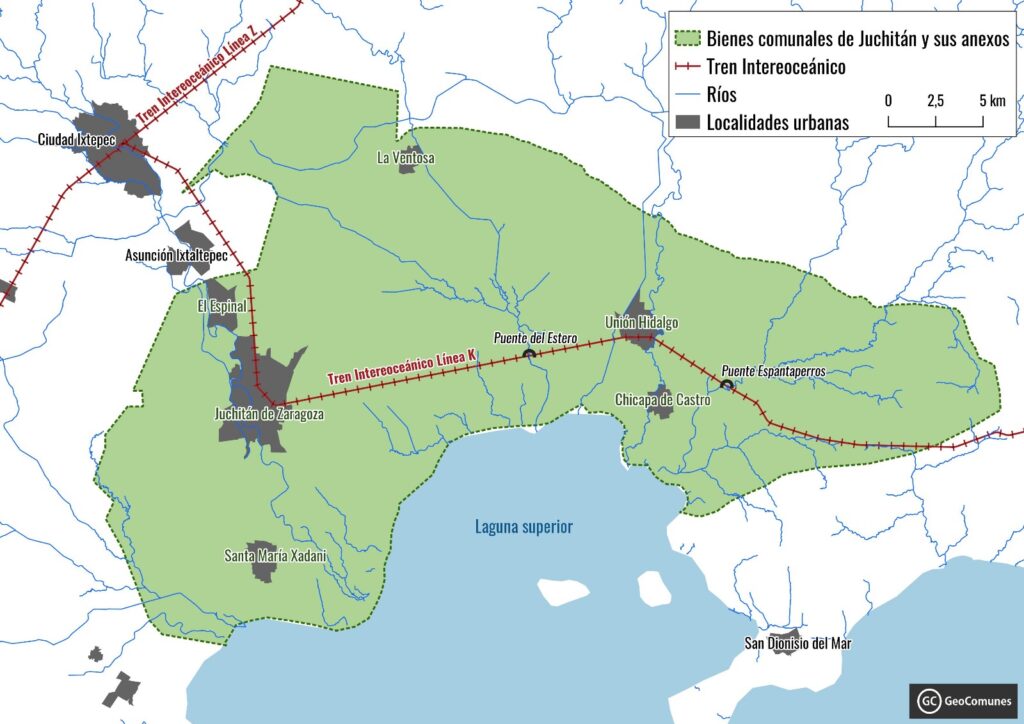
Map elaborated by the GeoComunes collective.
Residents of Unión Hidalgo perceive this work as major renovation, as it involves the replacement of all the materials that make up the tracks, as well as locomotives, stations, and other associated facilities.
In conversation with Avispa Midia, Édgar Martín, community organizer and land defender, resident of the Binizaá community, explains that they are even proposing the construction of military detachments run by the Secretariat of the Navy. The details regarding these detachments are very slowly coming to light as authorities have not informed the local population.
Martín says that members of the community have solicited information in relation to the scale and possible negative effects of the proposed projects, including the environmental impact report, which is an indispensable document to authorize environmental permits and give the green light for construction. The community organizer recalls that at first they appealed to the Interoceanic Corridor of the Isthmus of Tehuantepec, but they never received a response.
For his part, Óscar Marín, community member and representative of the communal lands of Unión Hidalgo, details that during a meeting with SEMAR at the beginning of 2024, the military refused to share the environmental impact report arguing that it must be solicited directly from the Secretary of Environment and Natural Resources (SEMARNAT).
The residents went ahead and did that. Martín explains that the response from the environmental authorities was a surprise. They argued that SEMAR was exempt from presenting an environmental impact report. For the community organizer, this is alarming because this section of the train line is the longest of the Interoceanic Corridor extending over a coastal plain, where there is a very real threat to ecosystems like mangroves, estuaries, and rivers.
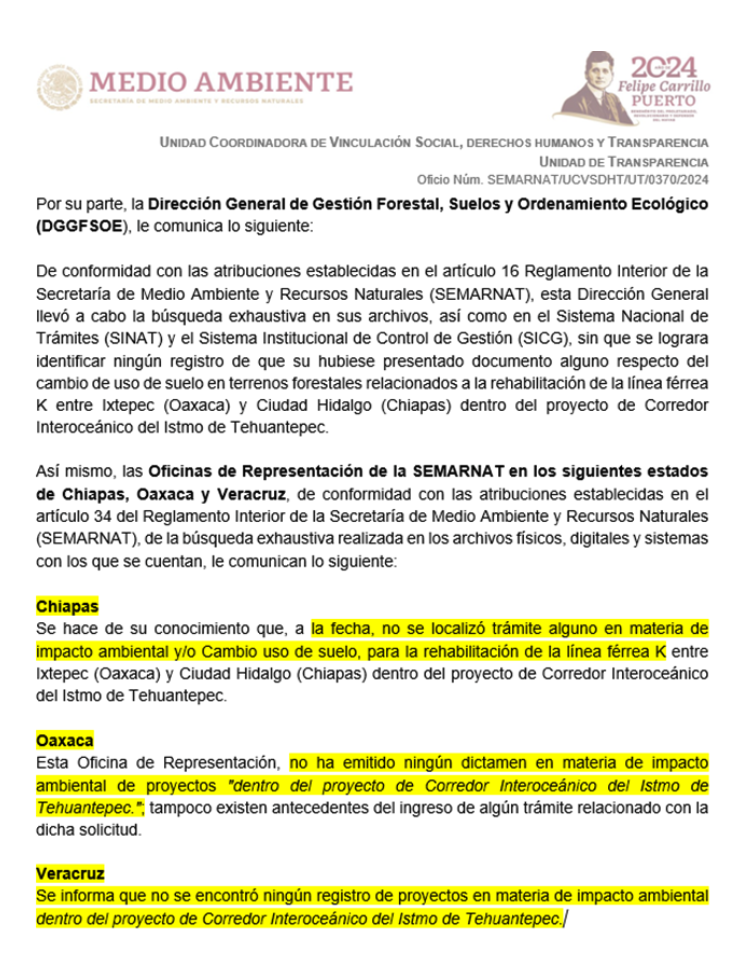
“We discovered that there is no environmental impact report, which is illegal, because the only exception possible is when there was already a previous environmental impact report. In this case there isn’t one. Legally, it is not possible for SEMAR to be exempt,” claims the community organizer
The Mexican government has announced that it seeks to finish the work in June in order to carry out tests in August, following the agenda of the President Andrés Manuel López Obrador, who plans to inaugurate the first phase of the project with a visit to the Isthmus in September, just a month before finishing his term in office.
Response from SEMARNAT to the petition from the Zapotec community of Unión Hidalgo for the environmental impact report.
Consequences
Line K passes through 26 kilometers of communal lands in Unión Hidalgo. According to Édgar Martín, this represents 6% of the total amount of train line in one single community, where the impacts would affect bodies of water. In the case of Union Hidalgo, there are two estuaries, a river, and more than 20 creeks.
Beyond the lack of an environmental impact report, for the community organizer Óscar Marín, the everyday work such as welding the bridges leaves metal residues, used oil, and other toxic wastes which SEMAR has refused to clean up.
The community member also highlights the deforestation being carried out by SEMAR and GFS, “Since the beginning of their renovation work, they’ve destroyed all the trees around the train tracks,” he says.
Edgar Martín adds that, according to the community registry, there have been more than 10,000 trees cut down. In January 2024, residents of Unión Hidalgo noticed the removal of hundreds of trees in the El Palmar communal forest—common use lands of great importance for the Indigenous community—which caused indignation and action to block the workers’ camp and stop the extensive deforestation.
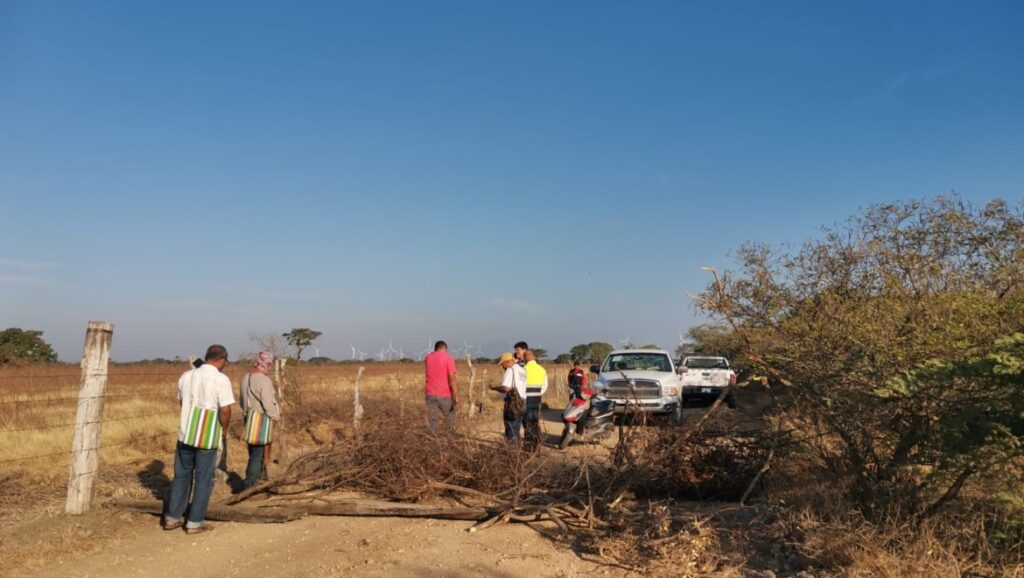
Environmental defenders block the path of the renovation work on Line K due to the indiscriminate cutting down of trees on communal lands in Unión Hidalgo.
Due to the protest in April, SEMAR made an agreement with the Secretariat of Agriculture and Rural Development in Oaxaca to carry out the production and reforestation of more than 16,000 trees. Through a letter, SEMAR solicited the intervention of the state authority to “mitigate the environmental impact in the renovation of Line K in the community of Unión Hidalgo.” The population still awaits the finalization of the renovation works to carry out the reforestation with native species.
In addition to the deforestation, for Martín, the greatest effects occurred in the hills to the south of the community. The insufficient gravel material to replace the entire embankment led SEMAR to extract gravel material from an area known as “El Barrancón,” damaging communal lands of the Zapotec community.
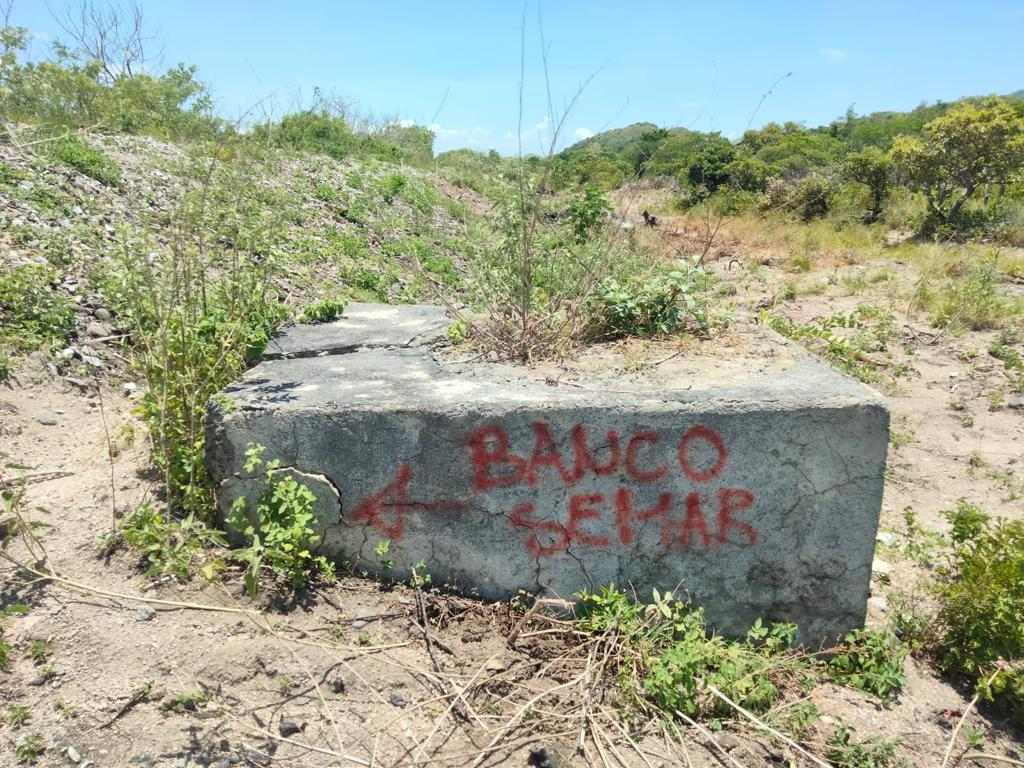
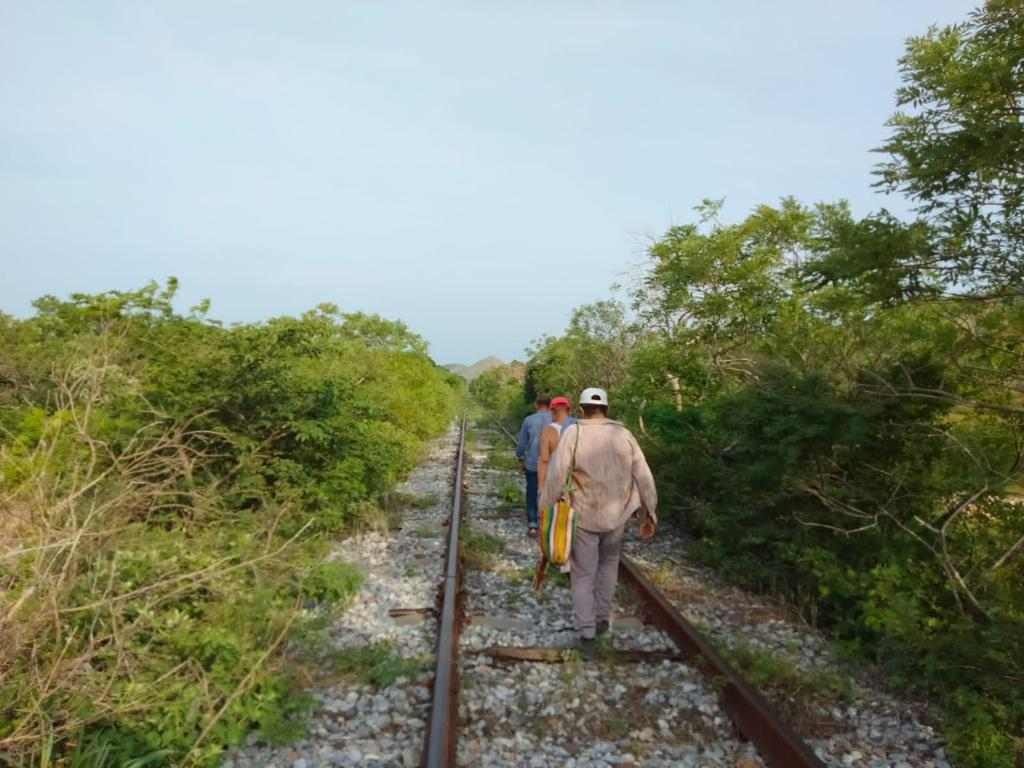
Residents of Unión Hidalgo surveil their territory so that SEMAR doesn’t continue extracting gravel materials. Photos: Diana Manzo
“There was a moment in which they were operating with 400 double capacity dump trucks. They were attacking two hills at the same time, with an impact that is impossible to repair,” he sustains. As a result, in October 2023, after discovering that the environmental impact report for the extraction was not authorized, residents denounced the illegal extraction.
After complaints from the Binizaá population, SEMAR and CIIT convoked a meeting to establish a dialogue and contain the protests. When they didn’t reach an agreement, in February 2024, Martín filed a writ of amparo.
The legal appeal solicited the suspension of renovation work on Line K, arguing that the extension of the authorization without an environmental impact report violates the rights to a clean environment, as well as the right to a previous consultation with Indigenous communities. In the same writ of amparo, SEMAR is accused of deforestation and ecological damage, as well as the “plunder and exploitation of El Barrancón; both without the environmental permits required by law.”
On March 5, the Seventh District Court of Oaxaca recognized the irregular operation of gravel extraction. However, Judge Mariam Fabiola Nuñez Castil refused the complete suspension of the renovation work on Line K, arguing that beyond the harm caused toward the Indigenous population, there is greater interest for society as a whole in its renovation. The judge referenced the presidential decree from May 2023 which catalogued the construction and operation of the Maya Train and the Interoceanic Corridor of the Isthmus of Tehuantepec as projects of national security and public interest.
The resolution emphasizes the importance of the project for the federal government: “By authorizing the design, planning, implementation, construction, and operation of Line K of the Interoceanic Corridor of the Isthmus of Tehuantepec, among other things, we will unite Chiapas and Oaxaca with 472 kilometers of train line, strengthening industrial activity and providing a modern and efficient alternative for national and international business.”
In spite of the suspension of the extraction of gravel materials, the devastation still affects the community. There still exists a “de facto usurpation” of the area that SEMAR has taken, because originally the right of way contemplated the use of 15 meters on both sides of the train line, taking the center of the line as reference. However, SEMAR authorities are claiming the use of 50 meters. “On the ground, through a tour of the area, we see that they are using between 50 and 100 meters,” denounces the community organizer regarding the irregularity of the renovation works.
Another community member, Marín, confirms this problem, alluding to the workers who are occupying lands outside of the established limits.
Persecution and Militarization
Édgar Martín is included in the Mechanism for the Protection for Human Rights Defenders and Journalists, organized by the Secretary of Government (SEGOB). In 2022, he was victim of an assassination attempt during resistance against the transnational company Electricite de France (EDF), which sought to install a wind farm on communal lands in Unión Hidalgo.
During the last few months, due to his environmental activism, his home has been broken into twice. In addition, Martín said that on at least 20 occasions, a dump truck dumped garbage, debris, and dirt in front of his house. He describes this as harassment for his work in defense of territory.
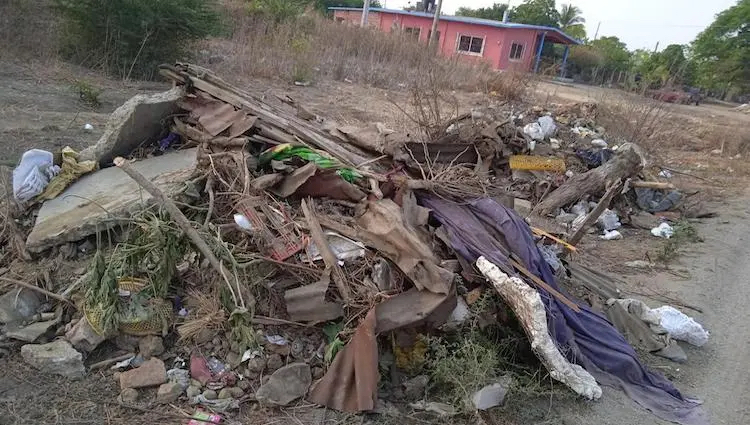
Debris dumped in front of the house of the environmental defender Edgar Martín. Photo: Istmopress
The community organizer also points out that during the blockade against the deforestation in the communal forest of Unión Hidalgo in April, officers of the municipal police assaulted residents who protested peacefully. In this context, he explains that he is no longer protected by the Mechanism for the Protection for Human Rights Defenders and Journalists.
“When I went up against the federal government, they stopped providing protection mechanisms, they left me in a vulnerable position,” he says of the risk of protesting against the Interoceanic Corridor megaproject.
For the community organizer, it is also worrying that federal authorities, in cooperation with the municipality of Juchitán, intend to install SEMAR detachments in the region. In October 2023, municipal authority Miguel Sánchez Altamirano granted a piece of land located in Pozo Peralta, less than 20 kilometers from Union Hidalgo, for the construction of a SEMAR detachment.
In an event with the presence of the Vice Admiral, Juan Carlos Vera Minjares, manager of the Unidad Coordinadora SEMAR CIIT, the municipal authority confirmed that the military detachments will “bring security to Line K of the train of the Isthmus of Tehuantepec, and contribute to safeguard the people of Juchitán.”

Municipal president of Juchitán during the handing over of the parcel of land to SEMAR for the installation of a military detachment.
In September 2023, SEMAR released a report where they list their works in progress including the naval station in Ixtepec and military detachments in Matias Romero and Tehuantepec.
In relation to the arming of the marines, the report assured that it provides the infantry units and naval establishments commissioned to the CIIT, and in particular to Line K, with equipment such as drones, video cameras, anti-riot security equipment, bullet proof vests and helmets.
In December 2023, during a press conference of the president, the Vice Admiral Raymundo Pedro Morales Ángeles, General Director of the CIIT, assured that 3,000 SEMAR elements are expected to safeguard the megaproject. Furthermore, he reported the advance in the construction of the installations in Oaxaca and Veracruz, assuring that “we will establish naval stations throughout the corridor.”
“You cannot build a military installation in Indigenous territory so easily,” claims Martín, who argues that in order to establish military detachments on Unión Hidalgo lands, it would first have to get the approval of the residents of the community.


